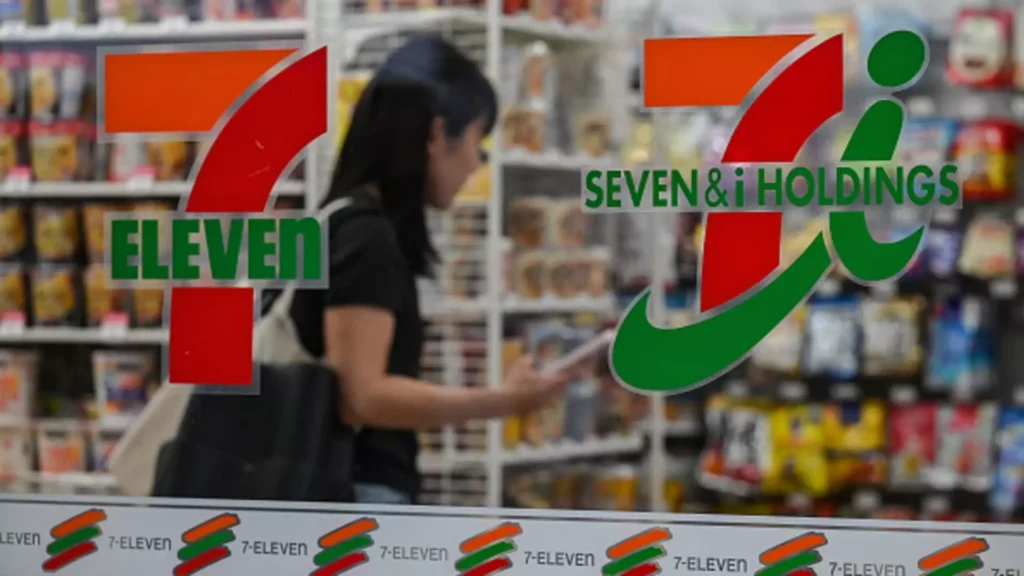Seven & i Holdings, one of Japan’s leading convenience retail chains, finds itself at a critical juncture. The company, which encompasses the iconic 7-Eleven brand, has recently announced significant cuts to its earnings forecast while simultaneously initiating a comprehensive restructuring plan. This convergence of events illustrates the complexities inherent in navigating the modern retail landscape, especially amid rising competition and economic pressures.
In a stark revelation, Seven & i Holdings has reduced its profit forecast for the fiscal year ending in February 2025 by a staggering 44.4%. The anticipated net income now stands at 163 billion yen, down from the previous forecast of 293 billion yen. This downward adjustment is not merely a statistic but a signal of the evolving consumer habits and market dynamics affecting the company. During the first half of the fiscal year, Seven & i recorded a net profit of 52.24 billion yen, on a revenue of 6.04 trillion yen. Although revenues have slightly surpassed expectations, profits are considerably below the projected 111 billion yen, showcasing significant challenges in the operational environment.
The decline in profit margins can be attributed in part to shifting consumer behavior, particularly among international customers of Seven & i’s overseas convenience stores. The company observed that these customers are taking a “more prudent approach to consumption,” a trend that directly correlates to the broader economic uncertainties impacting spending behaviors globally. In tandem with this, a painful one-time charge of 45.88 billion yen was recorded due to the planned spin-off of Ito-Yokado Online Supermarket, further constraining the company’s profitability in the short term.
These shifts highlight a growing tension between operational strategies and consumer expectations, revealing the challenges faced by traditional retailers in an increasingly digital and service-oriented marketplace.
Pressure from Investors and Strategic Realignment
As the financial results unfolded, Seven & i found itself under mounting pressure from investors to streamline its operations by shedding non-core business units. The proposed restructuring aims to consolidate 31 distinct units into a standalone subsidiary, which is intended to refine focus on the company’s core competencies and strengthen overall performance.
This restructuring is also a direct response to specific threats faced by the company, notably a potential takeover bid from Canada’s Alimentation Couche-Tard (ACT). The initial offer, which Seven & i deemed unattractive, has nevertheless prompted a serious reflection on its strategic direction. Following the rejection, the company sought a new designation as a “core business” under Japan’s stringent Foreign Exchange and Foreign Trade Act. This strategic maneuver serves to guard against unwanted foreign acquisitions while reestablishing the company’s independent footing in a competitive market landscape.
Seven & i’s decision-making process comes amidst heightened discussions around a revised bid from ACT, which reportedly raised its offer by nearly 20% to $18.19 per share. If completed, this acquisition may set a historic precedent as the largest foreign takeover of a Japanese company. According to market analyst Nicholas Smith, a transition from an amicable negotiation to a hostile takeover is conceivable, albeit complex. The legal landscape in Japan presents significant obstacles, as companies often deploy “poison pill” strategies to thwart potential acquirers.
Conversely, analysts like Jamie Halse indicate that while a hostile tender offer is unlikely, significant shareholder frustration could catalyze a shift in the company’s leadership dynamics. If shareholders perceive the offer as sufficiently attractive, it could compel the board to reconsider its stance, leading to potentially transformative changes in ownership and governance structures.
The situation for Seven & i Holdings is emblematic of the broader challenges and opportunities faced by traditional retailers in a rapidly changing economic climate. Whether it successfully navigates its restructuring efforts and fend off acquisition attempts largely hinges on its ability to recalibrate its business strategies in alignment with evolving consumer preferences. As the company grapples with these dynamics, it must balance immediate financial pressures against long-term strategic goals, positioning itself for sustained relevance amidst intense competition.

